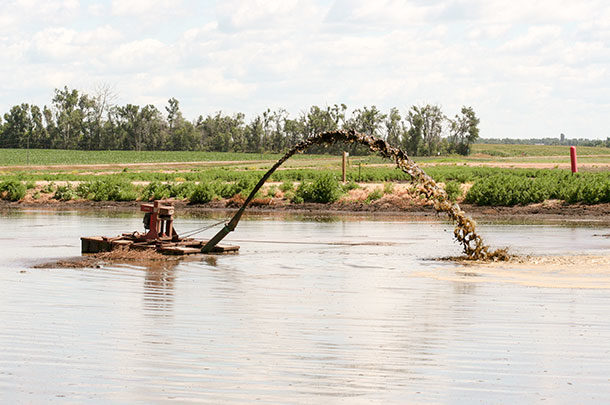Manure management are buzzwords that often bring a scowl to the face of a dairyman. It is often due to the huge costs of maintaining a manure system on a dairy, including equipment, personnel, regulatory costs, custom services, nutrient management plans, neighbor relations, odor control, sampling, maintenance, etc.
However, we must realize that the very manure that costs so much to handle has a tremendous value that almost always far exceeds the cost of managing it. The question is: What are we doing to maximize returns from this resource and to minimize the net cost of management?
We work with many dairies across the Midwest and find that $250 per cow space is a very real annual manure value being produced. These values are in terms of nitrogen, phosphorus, potassium, sulfur and zinc, which are the top five nutrients farmers buy from a commercial supplier.
This comes in many forms of different manure products produced from various facilities and manure management styles. On a 5,000-cow dairy, that is $1.25 million in annual manure value. Our challenge as an industry is how to maximize the percentage of that value being returned to the dairy.
Know your product
I referred to different manures as products because that is the first step in elevating manure management to a professional and profitable enterprise on your operation. Dairies are producing fertilizer products that need to compete with commercial products, regardless if it is being used on your own farmland or competing for neighbors’ acres.
It is important to understand what products you have in order to utilize, represent and manage them at a high level. Most dairies are producing different products, including effluents, slurries, separator solids, bed-pack solids and many others. Some are primarily nitrogen products, while others should be managed primarily as phosphorus or potassium products.
Good sampling and replication of sampling across all manure products on a dairy will give us the confidence and peace of mind in our knowledge of the manure fertilizer products being produced. Then, and only then, can we fine-tune our management and placement of these products.
Strategic plan
One of the main reasons it is important to know your manure product is to know where to place it, or where the investment in transport and application will provide the best returns. Manure contains many nutrients, and the more of these nutrients the application site can utilize, the more profitable it will be to apply manure there.
It is common for land controlled by dairies to have excellent fertility as a result from manure applications over the years. This does not mean it is wise to continue manure applications on those acres. For example, once fertility reaches a high soil-test level in phosphorus and potassium, then the only added value to manure is nitrogen.
The value of nitrogen in most manure is good, but it typically does not exceed the cost of application. Therefore, our valuable manure fertilizer needs to be applied where the crops and soils can benefit from the full portfolio of nutrients the manure offers. It is most likely that manure’s value will be maximized on fields that are newly acquired, further away from the facility or through developing a quality manure sales program with neighbors.
There is no one-size-fits-all manure management approach. There are many circumstances and variables that play into an operation’s decisions. Variability aside, it is extremely important each facility has a strategic plan in place to maximize manure’s value and have the highest impact on its bottom line.
Right rate
Once we know our product and where to put it, the next step is to determine the best application rate for each field. There are several challenges that come with getting the right application rate applied. One challenge is that manure products are variable and can be inconsistent. Those inconsistencies can be minimized by keeping and managing the different types of manure products on a dairy.
You cannot put everything into one pit or one pile and expect to maximize the value of each individual type of manure being produced. Another very important step toward consistency is to do proper agitation of liquids. Agitation is key when dialing in the right liquid manure rate to apply.
We can calculate rates based on agronomic strategy once we confidently have a consistent product. Choose if you will provide all of your nitrogen needs with the manure or if you will meet phosphorus or potassium needs of the crop and then perhaps supplement commercial N if necessary. We must know our need, understand our product and have a strategic plan to determine the proper rate.
The next challenge is to apply that rate consistently in the field. Choose equipment or custom applicators with the latest technology. Flow meters, auto-steer and big horsepower will provide the greatest precision and consistency in the field.
Time and logistics will convince you to apply heavier rates on fewer acres to get done faster. However, economics and agronomics will show that it makes much more business sense to spend the extra time and money to impact more acres with the same amount of product.
The yield impact of having more acres or more customers reaping the benefits of your manure resource will almost always exceed the cost of doing so.
Of course, we all know manure management is an environmental issue, but a good businessman will recognize that it is also an economic issue and a great business opportunity. It is unusual when environmental compliance, economics and agronomics all want to achieve the same thing.
It doesn’t make any sense to apply nutrients where we don’t need them. It makes a lot of sense to apply them where they are needed, and that is how we squeeze all of the “green” out of our manure resources. PD
PHOTO:Photo by Jeff Stoker.

-
Andy Scholting
- General Manager
- Nutrient Advisors
- Email Andy Scholting






